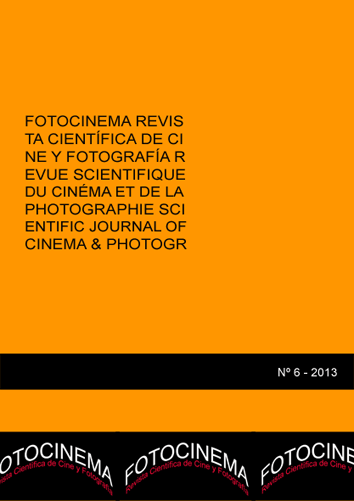Nuevos lenguajes fílmicos en la vieja Europa: el cine social de los hermanos Dardenne
DOI:
https://doi.org/10.24310/Fotocinema.2013.v0i6.5911Abstract
Resumen:Las películas de los hermanos Dardenne son documentos vivos, poblados de perso-najes marginales y excluidos, que ofrecen enormes posibilidades para reflexionar desde múltiples espacios educativos. Su obra presenta un reconocido estilo personal autoral, tanto en la forma como en las historias que aborda, susceptible de análisis y profundización. Adentrarse en ella y bucear su estilo narrativo es el objetivo de este estudio. Para materializarlo se esboza, al inicio, la tradición europea creadora de nuevas formas de expresión fílmica a lo largo del siglo XX -desde el naturalismo poético francés hasta llegar al movimiento nórdico “Dogma 95”- para explorar, más detenidamente, a continuación la produc-ción de los directores belgas: siguiendo un planteamiento evolutivo que transita desde sus primeros trabajos que antecederán a “La promesa” (1996) hasta su último film, “El niño de la bicicleta”( 2011), en este texto se analizan las obras de ficción de los hermanos y el estilo característico que pre-domina en ellas. Planos cortos, que trans-miten su propia vida interior, y de larga duración para que se pueda seguir atentamente la acción, filmación continua-da en el mismo orden programado en el guión, ausencia de música intrusiva, imá-genes despojadas de toda clase de buenos sentimientos… el sello personal de los Dardenne abre cauces novedosos de expresión comunicativa tan poderosos como creativos.
Abstract:
The movies of the Dardenne brothers are living documents filled with marginalized characters that offer a great opportunity to think and reflect from different educational perspectives. Their work has a very personal composition; for being ahead of its time and for the depth of its analysis. With this essay, we try to explore and dive deep in their narrative style. For that, we first draft their influences taken from the European tradition with its new ways of filmic expressions, throughout the XX century: from the poetic French naturalism to the Nordic movement “Dogma 95”, to explore in bigger detail, after that, the influence of the productions of Belgian directors: all of these following an evolutionary approach that goes from their first movies before “La promesse” (1996), to their last film, “The kid with a bike” ( 2011),in this text, we analyze their fictional tales and their characteristic style. Close ups that describe an inner life and long shots to attend to the events in detail. The filming is always done in the order planned in the screenplay, there is always a lack of intrusive music, images without any kind of good feelings...the style of the Dardenne brothers which is an open door to new communicative styles, all of them powerful and creative.
Palabras clave: Cine; historia del cine; análisis fílmico; narrativa audiovisual; exclusión social
Keywords: Cinema; cinema history; film analysis; audiovisual narration; social exclusion
Downloads
Metrics
Downloads
Published
How to Cite
Issue
Section
License
All contents published in Fotocinema Revista científica de cine y fotografía are protected under the Creative Commons Attribution-NonCommercial-ShareAlike 4.0 International (CC BY-NC-SA 4.0) license. All about this license is available in the following link: <http://creativecommons.org/licenses/by-nc-sa/4.0>
Users can copy, use, redistribute, share and exhibit publicly as long as:
- The original source and authorship of the material are cited (Journal, Publisher and URL of the work).
- It is not used for comercial purposes.
- The existence of the license and its especifications are mentioned.
There are two sets of authors’ rights: moral and property rights. Moral rights are perpetual prerogatives, unrenounceable, not-transferable, unalienable, imprescriptible and inembargable. According to authors’ rights legislation, Fotocinema. Revista científica de cine y fotografía recognizes and respects authors moral rights, as well as the ownership of property rights, which will be transferred to University of Malaga in open access. The property rights are referred to the benefits that are gained by the use or the dissemination of works. Fotocinema. Revista científica de cine y fotografía is published in an open access form and it is exclusively licenced by any means for doing or authorising distribution, dissemination, reproduction, , adaptation, translation or arrangement of works.
Authors are responsable for obtaining the necessary permission to use copyrighted images.













13.png)




